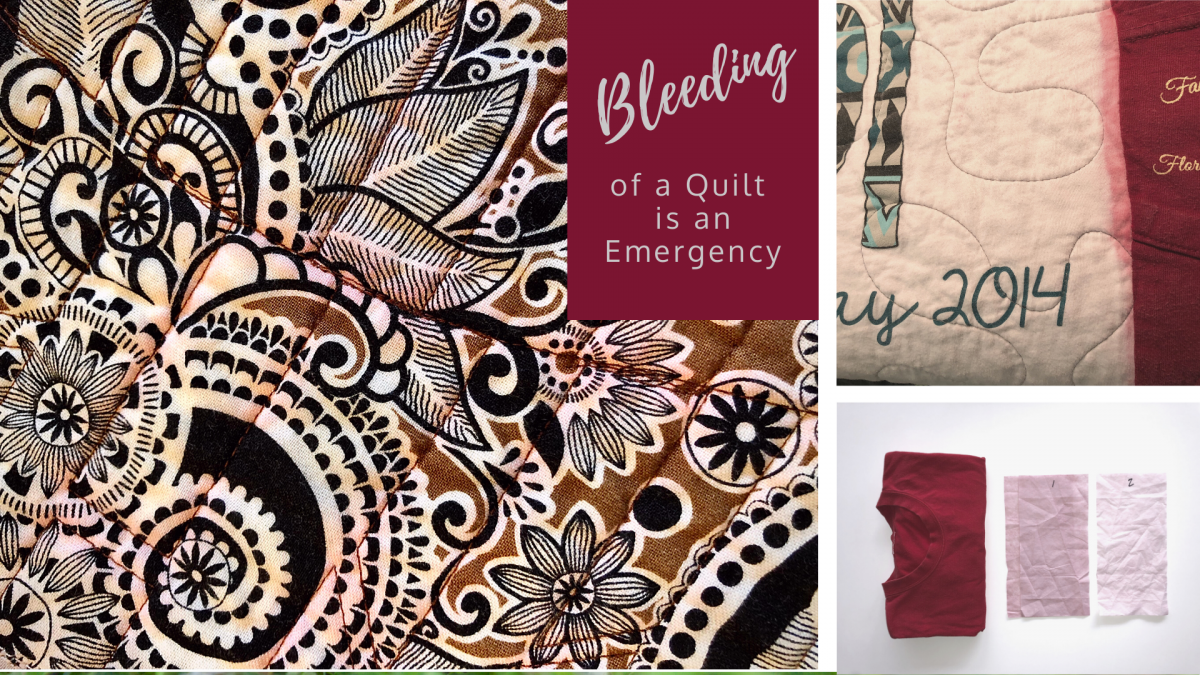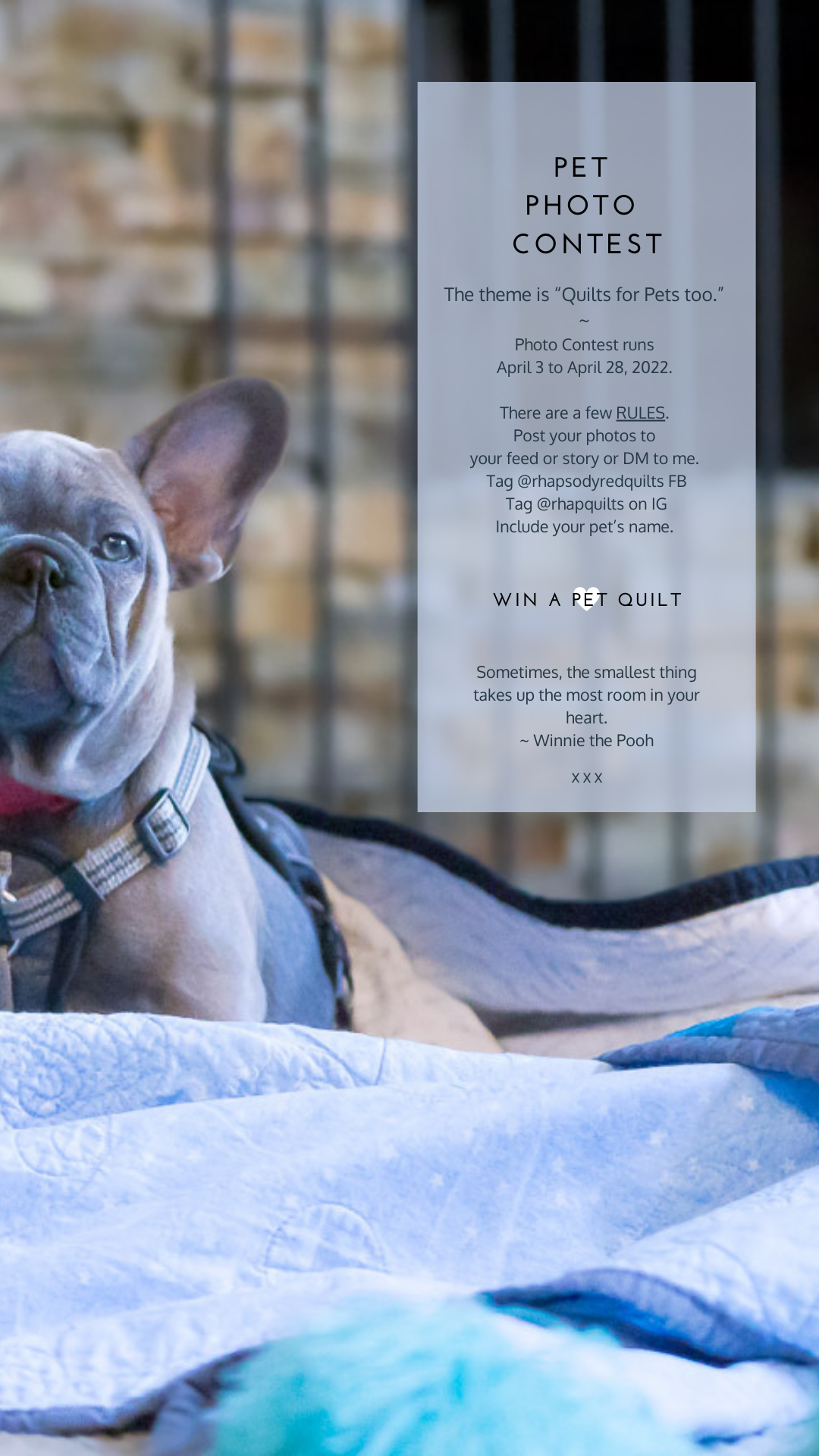Fabric dye bleeding of a quilt is an emergency.
If you have washed a new quilt or washed a quilt with other clothes and have color bleeding on the quilt, you will know firsthand it is an emergency and how awful it feels to not know how to fix it.
Color bleeding occurs when fabrics get submerged in water, i.e., washing, causing the dye in them to leach out. It becomes a problem when the dye in the wash attaches to other fabrics.
First of all, do NOT dry the quilt.
Several things to consider;
- The information in this article and reference information are intended for new or near-new quilts, not vintage quilts. With vintage quilts, there are more considerations because they may be more fragile.
- If the quilt is not cotton, this process may be detrimental to your quilt.
- The quality of water in your home will also affect the end result. Do you have well water with iron? City water may have lots of chemicals. You may want to use distilled water for washing a quilt.
- No process is guaranteed.
BLEEDING
If you have a quilt that came out of the washer with bleeding on it, the following should be your first course of action. There are many recommended by many individuals for eliminating bleeding on a quilt. I’m sure many work and some don’t, and some cause challenges down the road. If your quilt is made of cotton and not a vintage quilt, I recommend the following process. I am cautious because of the use of hot water. I am sharing information by Vicki Welsh that is detailed, thorough, and backed by research. Check HERE to read her document, SAVE MY BLEEDING QUILT, 2014. The process gives you detailed instructions on how to soak and allow the dye to be released from the fabrics. The trick is to prevent the dye from grabbing onto other parts of the quilt. Here are the basic steps.- Fill a tub with approximately 140-degree water, enough to completely submerge the quilt and keep it under
- Add detergent, agitate by hand to mix the detergent and water
- Add the quilt and completely submerge and move around to soak move the soapy water around it
- Drain the water and repeat, do not wring the quilt, squeeze
- Soak for approximately 12 hours
- Repeat the steps until the water is clear
- Dry quilt as you normally would
WHY DOES FABRIC BLEED
The major reasons fabric dyes bleed are poor quality dye, inadequate washing and rinsing after dying the fabric, and not using fixatives to bind the dye.PREVENTIVE MEASURES
Do not overcrowd the washer. The friction that occurs during washing causes micro-breaks in the fibers allowing dyes to detach from fibers and bleed out. Wow, right. Very sciencie. Avoid harsh detergents and bleaches. Avoid extensive exposure to the sun. Not only will the sun cause fading, but dye is released with sun exposure. Avoid washing in hot water. And lastly, as your mother told you, wash clothes of similar colors together (darks with darks and lights with lights) and consider washing quilts on their own.MYTHS
Washing with vinegar or salt does not prevent dyes from running.FIRST WASHING
If you are fortunate enough to plan for the first wash, use preventive measures and be prepared for potential bleeding. It is highly recommended to test for colorfastness before washing for the first time. Typically reds are the biggest culprits, followed by purples, blues, and blacks. Test all colors. I have had bright yellows bleed.Testing for colorfastness
To test for colorfastness, dampen a white cloth. Rub the wet cloth on each fabric of the quilt. If any color comes off onto the white cloth, the item is not colorfast. The dye will run when the quilt is washed. And you will cry. Or at least use a few choice words.Facts you can amaze your friends with
Red dyes are not more susceptible to bleeding than other colors. The challenge is the type of dye. Red fabrics use a type of dye called direct dye. Direct dye will bleed in every wash unless treated with a cationic dye fixative. It is available for other colors, which make them just as susceptible to bleeding as red. Fiber reactive dyes, the best quality dye, will not bleed as significantly. The fiber reactive dye forms a covalent bond with the molecules and becomes part of the fiber. Again, wow. This is like science class. Is it lunch yet?Regular wash
If your quilt doesn’t appear to have bleeding challenges, wash with Shout Color Catchers as a precaution. Wash on a gentle cycle and cold water.Washing with potential bleeding
If you do have fabrics that are not colorfast, consider two things.- Use Retayne, a color fixative, to help make the dyes permanent. Do this before washing. Instructions are on the product. You can purchase online. Add 140-degree water to your washer to a level that will allow the quilt to be submerged. Add 1 – 4 tsp of Retayne as recommended and run the washer on gentle for about 20 minutes. Rinse. HERE is detail information on Retayne. An alternative to Retayne is Rit Dye Fixative.
- Follow the Retayne process with a gentle cold water wash. Add several Shout Color Catchers, or a lot, to the wash. Check the color catchers. If they are a dark color, run the quilt through again with fresh color catchers.



